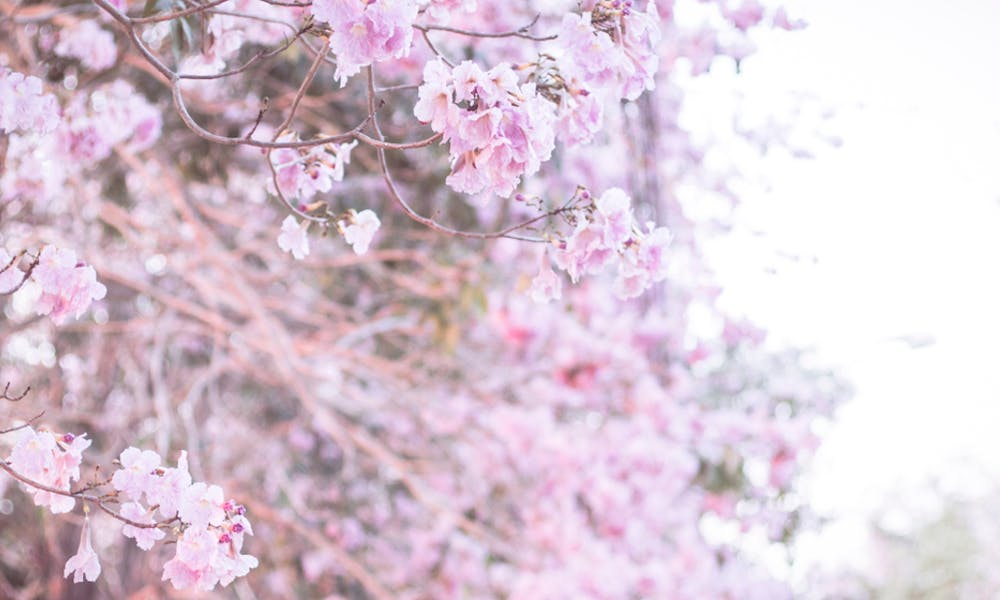MENU
When to Look for a Japanese Flower by Season

Culturally in Japan, their most popular flowers have a sacred meaning, bringing a purpose to the beautiful blooms. So much so, that festivals are held for specific ones. The most widely known Japanese flower, is the Japanese cherry blossom, as it is the national flower. Knowing which season each bloom in and where to find them, can help you on your journey to appreciate their beauty and symbolism. –
Today, in this article, we are going to learn more about Japanese flowers, when they bloom and where to find them:
- * The Japanese Cherry Blossom
- * Japanese Flower Blooming in the Spring
- * Japanese Flowers Blooming in the Summer
- * Japanese Flowers Blooming in the Fall
- * Japanese Flowers that are Between Seasons
The Japanese Cherry Blossom
Since the Japanese Cherry Blossom is the national flower of Japan, it is the most common flower. There are various Japanese cherry blossom gardens around Japan that host festivals specifically for the cherry blossoms. These festivals generally occur in the Spring when they are in full bloom. The best time to visit them is from March to April at Hokkaido Island and Sumida Park, though, towards the end of the season, when the blossoms fall off, it is actually the most picturesque time as they cover the ground with their pink petals. Though many people think they are only found in Japan, they are also found in North America, such as Washington, New York, and Georgia. The Japanese cherry blossoms represent beauty of the heart and accomplishment.
Japanese Flowers Blooming in the Spring
Along the coast of Southern Japan is where the tsubaki is found. Commonly known as camellia, the evergreen shrub represents the perfect love as well as discretion and humility. Various shades of red and pink blooms contrast the dark, glossy leaves of the shrub.
Resembling a sakura tree, the sakurasou blooms magenta, daisy-like flowers. This plant was found during the Edo period but is still just as popular today. Representing an everlasting love, the sakurasou is found through Japan’s forests because of the dampness.
Small shrubs showing of their bright violet flowers, as the name suggests, are seen often along walls and in gardens throughout Japan. It represents small bliss and sincerity and is known as sumire is Japan.
Tulips are a popular cut flower with a globally known symbol of eternal love. Find them at the various gardens and parks in Japan, including huis ten bosch and the Nabana No Sato Park. In Japan, it is known as akaichurippo.
The momo tree, also known as Prunus Persica, is covered in pink, edible flowers and fruits peaches. At least two flowers form on each bud. The momo represents a fascinating personality and it can be found in a variety of Japan’s famous parks such as Koga Park and Ibaraki. It blooms in the month of April.
Japanese Flowers Blooming in the Summer
With a similar appearance to typical sunflowers, the himawaris are grown in large fields, offering a site of yellow carpets. The Japanese hold a festival for their sunflower as well, called the ‘Himawari Matsuri,’ where the public can appreciate the beauty. Himawaris represents longevity, loyalty, and adoration. Find this yellow bloom in Hokuryu, Hokkaido Island, and the Furano flower fields.
Creating the perfect circle, the purple blooms of lavender generally grow along fences and trellises as a vine. Known as rabenda, it has a meaning of faithfulness for the Japanese. Rabenda can be found in the Furano flower fields as well as the Tambara Flower Park.
Japanese Flowers Blooming in the Fall
The red rose, or akaibara, represents romance, just as it does in various other parts of the world. This is why they are often gifted as a sign of love. Find them in most Japanese flower gardens, specifically, the Gora Park.
During the Edo period, the Chinese brought the orange osmanthus to Japan. The orange blossoms on the ever-green shrub are full and brightly colored. The shrub bears a black fruit drupe. This means flesh covers a hard, shelled seed. The shrub represents a noble person and truth. Known as kinmokusai, it is often seen in various Japanese gardens.
With favorable conditions, the hydrangea, or ajisai, often blooms in the early fall. Since it represents gratitude and apologies, the Hydrangea is a common gift. Depending on the acidity in the soil, hydrangeas come in shades of pink to blue. The more acidic, the bluer the flower. Find it in Nabana No Sato Park.
Japanese Flowers that are Between Seasons
Blooming in the late spring to mid-summer, the Japanese iris is famous for bringing good news but it also stands for loyalty. Find them thriving in the late spring to early summer at the Gunma Flower Park as well as the Nabana No Sato Park. Sprouting from the middle of the flower are yellow stripes surrounded by three violet petals. The Iris is said to bring good tidings as well as loyalty.
With a meaning of faithfulness and a pure heart, the Japanese apricot tree, ume, has sweet fragrant blossoms, blooming in the early spring. Making a fitting houseplant as well as potential bonsai, ume is seen often in Japanese gardens. The buds start out a dark pink but fades as it matures.
The green shrubbery of the morning glory consists of heart-shaped leaves that open on cool mornings. Representing a bond of love, the morning glory blooms from summer to early fall. Find them in the Japanese gardens of Osaka.
Known around the world as a symbol of love, carnations are often gifted. Seen throughout the gardens of Japan, the carnation blooms from the late spring to midsummer. The petals are edible with a sweet taste and are known as Kaneshon.

